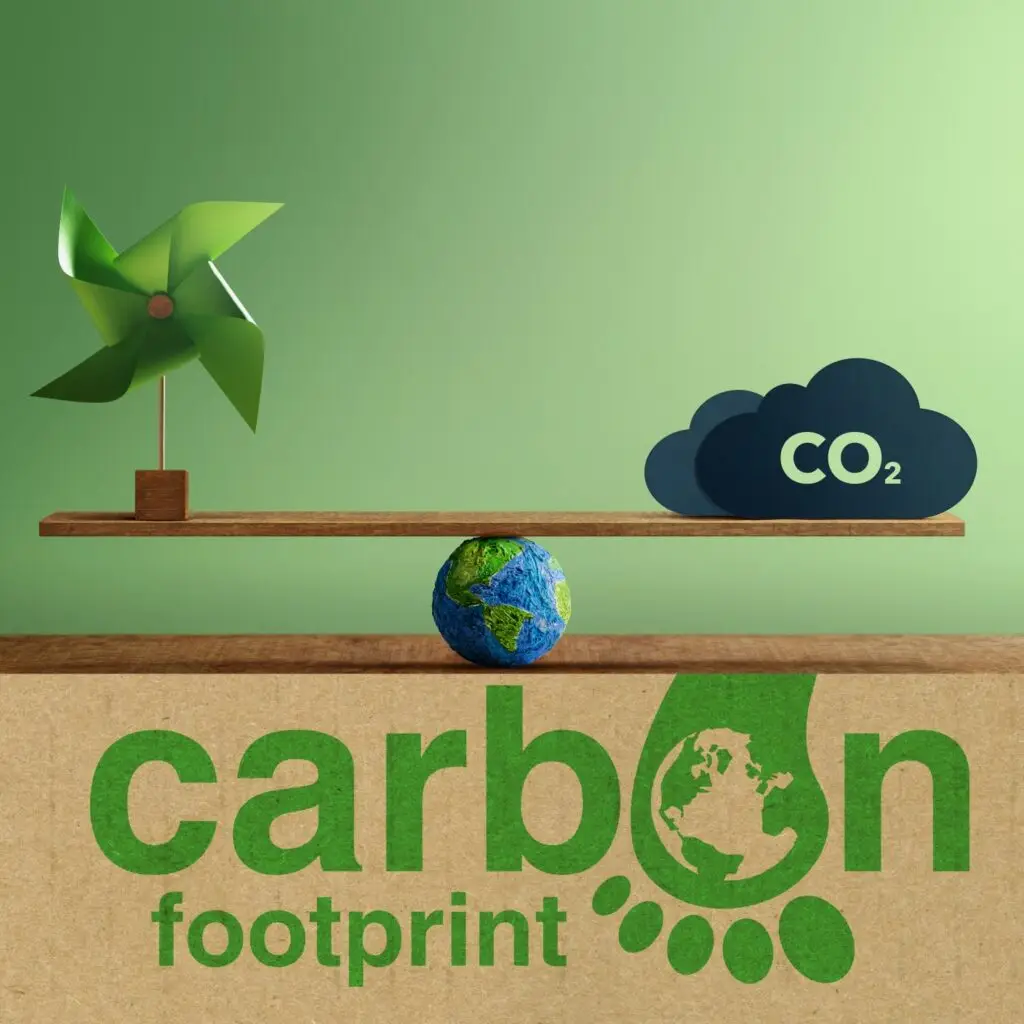In today’s world, reducing your carbon footprint is not just an environmentally conscious choice—it’s an essential step in combating climate change and ensuring a healthier planet for future generations. The good news? You don’t have to overhaul your entire lifestyle to make an impact. Small, actionable steps can lead to significant changes in your carbon emissions.
This guide will walk you through five straightforward ways to minimize your carbon footprint, offering tips that are easy to implement and impactful over the long term.
Table of Contents
Toggle1. Calculate and Understand Your Carbon Footprint
Before you can reduce your carbon footprint, it’s essential to understand what it is and how it’s measured.
What Is a Carbon Footprint?
A carbon footprint represents the total greenhouse gas emissions caused by your actions, lifestyle, and consumption. This includes everything from the energy you use at home to the transportation methods you choose.
How to Calculate Your Carbon Footprint
Use free online calculators, such as the ones provided by the EPA or WWF, to estimate your annual carbon emissions. These tools factor in your energy consumption, transportation habits, diet, and shopping patterns.

Why Understanding It Matters
Knowing the areas where you emit the most carbon helps you focus on making meaningful changes. For example, if transportation makes up a significant portion of your footprint, you can prioritize carpooling or biking.
2. Optimize Your Transportation Choices
Transportation is one of the largest contributors to carbon emissions. Switching up your travel habits can have a major impact.
Choose Low-Carbon Commutes
- Carpooling: Sharing rides reduces the number of vehicles on the road.
- Public Transit: Buses and trains emit far fewer greenhouse gases per passenger than cars.
- Biking or Walking: Great for short distances, these options are both carbon-free and healthy.

Fly Smarter
- Opt for direct flights whenever possible, as takeoffs and landings generate the most emissions.
- Consider purchasing carbon offsets to balance the emissions of your flights.
Switch to an Electric Vehicle (EV)
EVs produce significantly less carbon over their lifetime compared to traditional gas-powered cars. If a new EV isn’t in your budget, explore hybrid models or focus on maintaining your current vehicle for better efficiency.
3. Make Your Home Energy-Efficient
Your home is a significant source of carbon emissions, primarily through heating, cooling, and electricity use.
Upgrade to Energy-Efficient Appliances
When it’s time to replace household items, choose Energy Star-certified appliances that use less electricity and water.
Improve Insulation
Proper insulation reduces the need for excessive heating in winter and cooling in summer, cutting down energy use.
Adopt Smart Technology
- Use programmable thermostats to optimize energy usage throughout the day.
- Install motion-sensor lights to minimize electricity waste in less-frequented areas.

Switch to Renewable Energy
If possible, transition your home to renewable energy sources like solar or wind power. Even subscribing to green energy programs through your utility provider can help reduce your carbon footprint.
4. Rethink Your Diet and Food Choices
The food you eat has a direct impact on your carbon emissions, from production to transportation.
Go Plant-Based
Plant-based diets generally produce fewer emissions than diets rich in meat and dairy. Even adopting “Meatless Mondays” can make a difference.
Buy Local and Seasonal
Locally-sourced food requires less transportation, while seasonal produce avoids the high energy costs of greenhouses and cold storage.

Minimize Food Waste
Wasted food often ends up in landfills, where it releases methane—a potent greenhouse gas. To cut down on waste:
- Plan meals in advance.
- Store perishables properly to extend their shelf life.
- Compost food scraps whenever possible.
5. Reduce, Reuse, Recycle
The three R’s—Reduce, Reuse, Recycle—are foundational to a low-carbon lifestyle.
Reduce Consumption
Buy only what you truly need. Overconsumption not only generates waste but also contributes to emissions through production and transportation.
Reuse Whenever Possible
- Invest in durable items like reusable water bottles, shopping bags, and coffee cups.
- Upcycle old furniture or clothing instead of buying new items.

Recycle Correctly
Know your local recycling guidelines to ensure you’re recycling properly. Contaminated items can render entire batches of recycling unusable.
Support Circular Economy Brands
Choose companies that prioritize sustainable practices, such as using recycled materials in their products or adopting zero-waste policies.
Small Changes, Big Impact
Cutting your carbon footprint doesn’t have to mean sacrificing convenience or comfort. By making thoughtful changes in your daily life, you can significantly reduce your environmental impact while setting an example for others.
Ready to start reducing your carbon footprint? Take one step today—whether it’s calculating your emissions, biking to work, or opting for plant-based meals—and see how easy it can be to make a difference.
At Planet Ideal, we’re on a mission to make sustainable living accessible for everyone. Our team of eco-enthusiasts writes short, snappy, and easy-to-digest articles designed to inspire real change without overwhelming. From practical tips to innovative ideas, we’re here to prove that living green can be stylish, convenient, and enjoyable. Join us as we empower individuals, families, and communities to embrace eco-friendly lifestyles—one step, one story, and one solution at a time.






